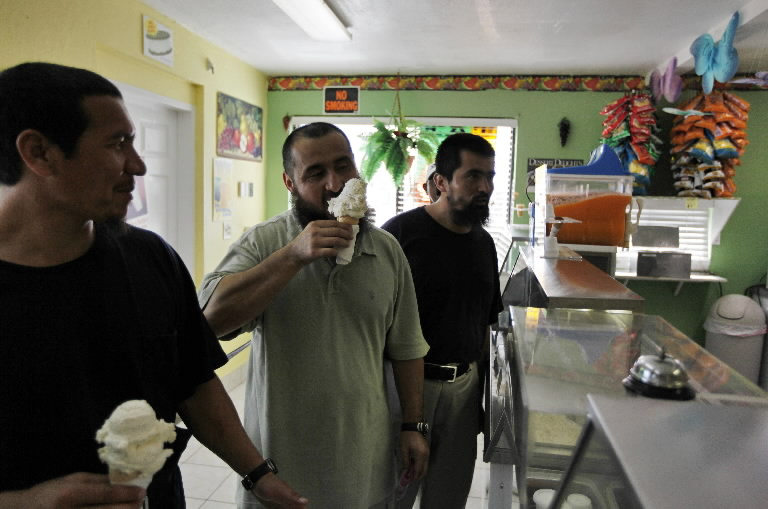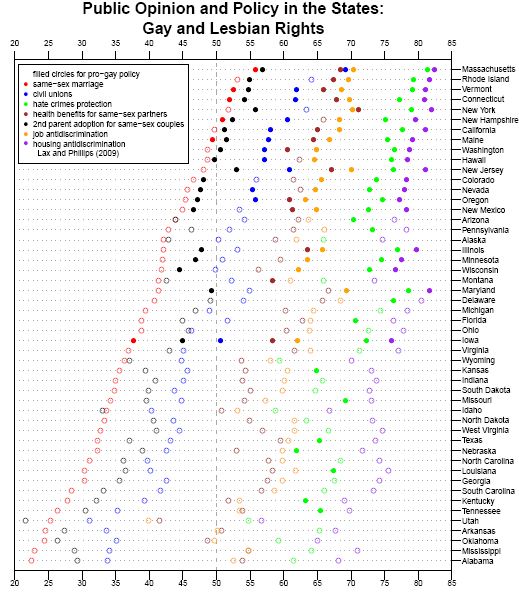Miguel of El Forastero told us about an interactive map at the New York Times that presents data on murders in New York City from 2003 to today, broken down in various ways. The data come from NYPD reports, and of course there are definitely issues with taking police reports as a measure of actual crime, but my understanding is that while police reports on things like theft and rape are a poor measure of how often those crimes actually occur, they’re considered much more accurate regarding murder. In each map below, I include all murders from 2003 to 2009, but you can select particular years as well.
As many of us would suspect, the majority of murders occur at night (though the site didn’t specify exactly what hours are defined as “night” and “day”):

The racial breakdown of both victims and perpetrators are extremely similar:
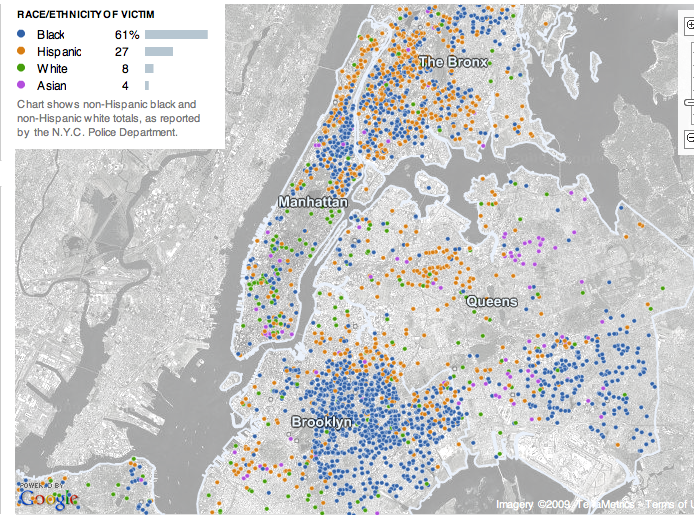
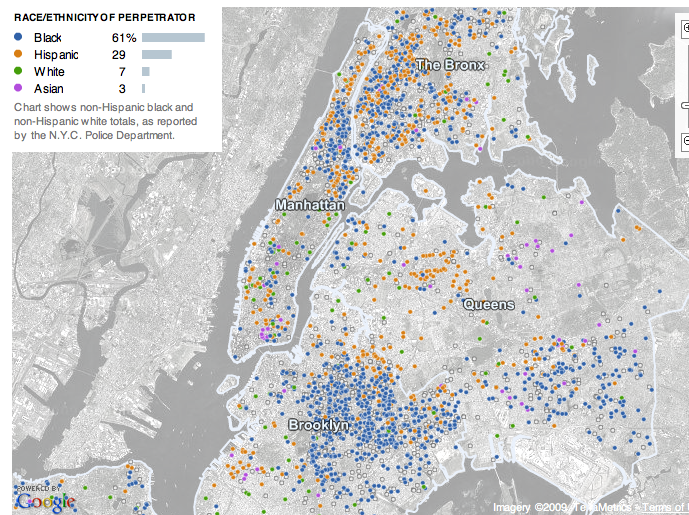
The next two maps show that murder is an overwhelmingly male activity. When I discuss crime with my students, they usually assume most perpetrators are male, but because their ideas of assult and murder often relate to domestic violence or rape, they are always very surprised to find out that most victims of murder are also male. As we see, women are more likely to be victims than they are to be perpetrators, but still, the vast majority of murder victims are men:
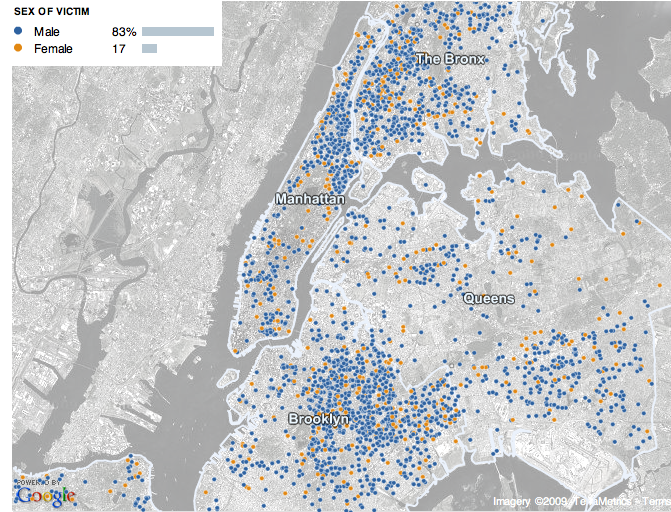
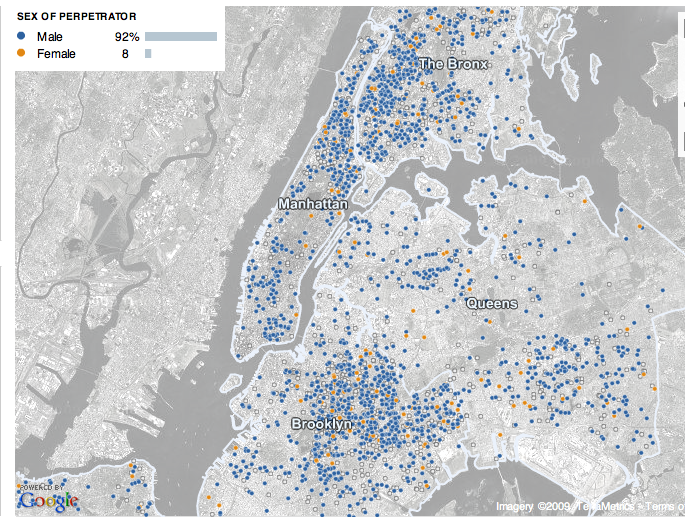
Murder is also linked to age, with 18 to 34 year olds being most likely to be murdered or to murder someone else:
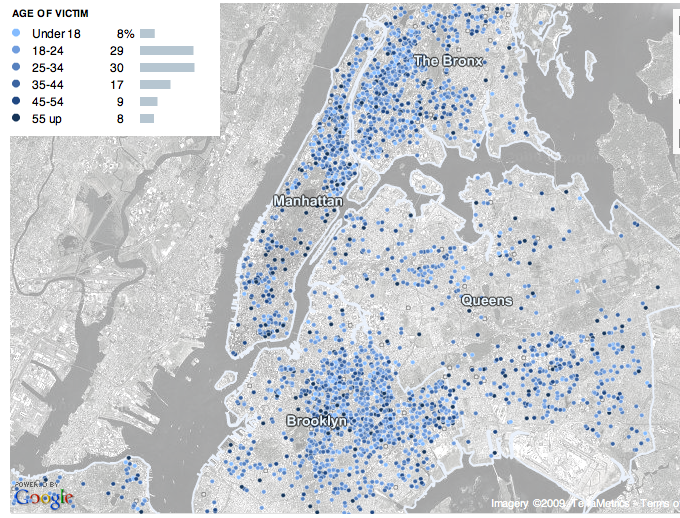
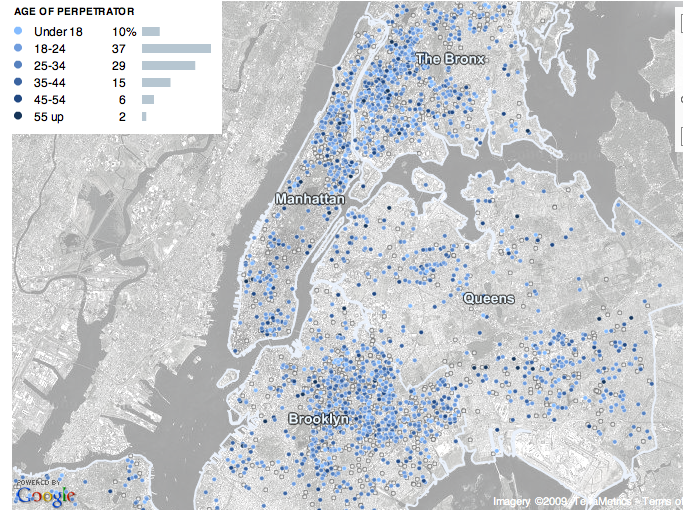
I found the accompaning article in the NYT rather interesting as an example of overemphasizing the likelihood of murder. Here are the first two paragraphs:
A young boxer was shot dead outside a Bronx bodega at 3:30 a.m. on a Saturday last August. Weeks later, a 59-year-old woman was beaten to death on a Saturday night on the side of a Queens highway. On the last Sunday in September, violence exploded as five men were killed in a spate of shootings and stabbings between midnight and 6 a.m.
Seven homicides in New York City. None connected in any way but this: They happened during the summer months, when the temperatures rise, people hit the streets, and New York becomes a more lethal place.
A few paragraphs down:
Still, the prime time for murder is clear: summertime. Indeed, it is close to a constant, one hammered home painfully from June to September across the decades. And the breakdown of deadly brutality can get even more specific.
Only in paragraph 6 do we get this information:
Of course, the dominant and most important trend involving murder in New York has been the enormous decline in killings over the last 15 years, to levels not seen since the early 1960s.
From reading the first several paragraphs, the impression is that NYC is awash in a “spate” of murders, making it a “lethal” place full of “deadly brutality.” Only in one small section do they acknowledge that, in fact, murders are down significantly. Now, of course, that doesn’t take away from the horror of the murders that do occur, but it feels like a bit of fear-mongering. This is a common trend in the mass media–newscasts often give a lot of coverage to crimes, particularly murders and assaults, for instance–and it gives the public the idea that crime is common (and increasing) and the world is a dangerous place.
The emphasis on how dangerous summer is also seemed a bit disproportionate. As the first map above illustrates, yes, a higher percentage of murders occur June through September, but given the language of the article, you’d expect a much bigger difference between those months and other times of year.

